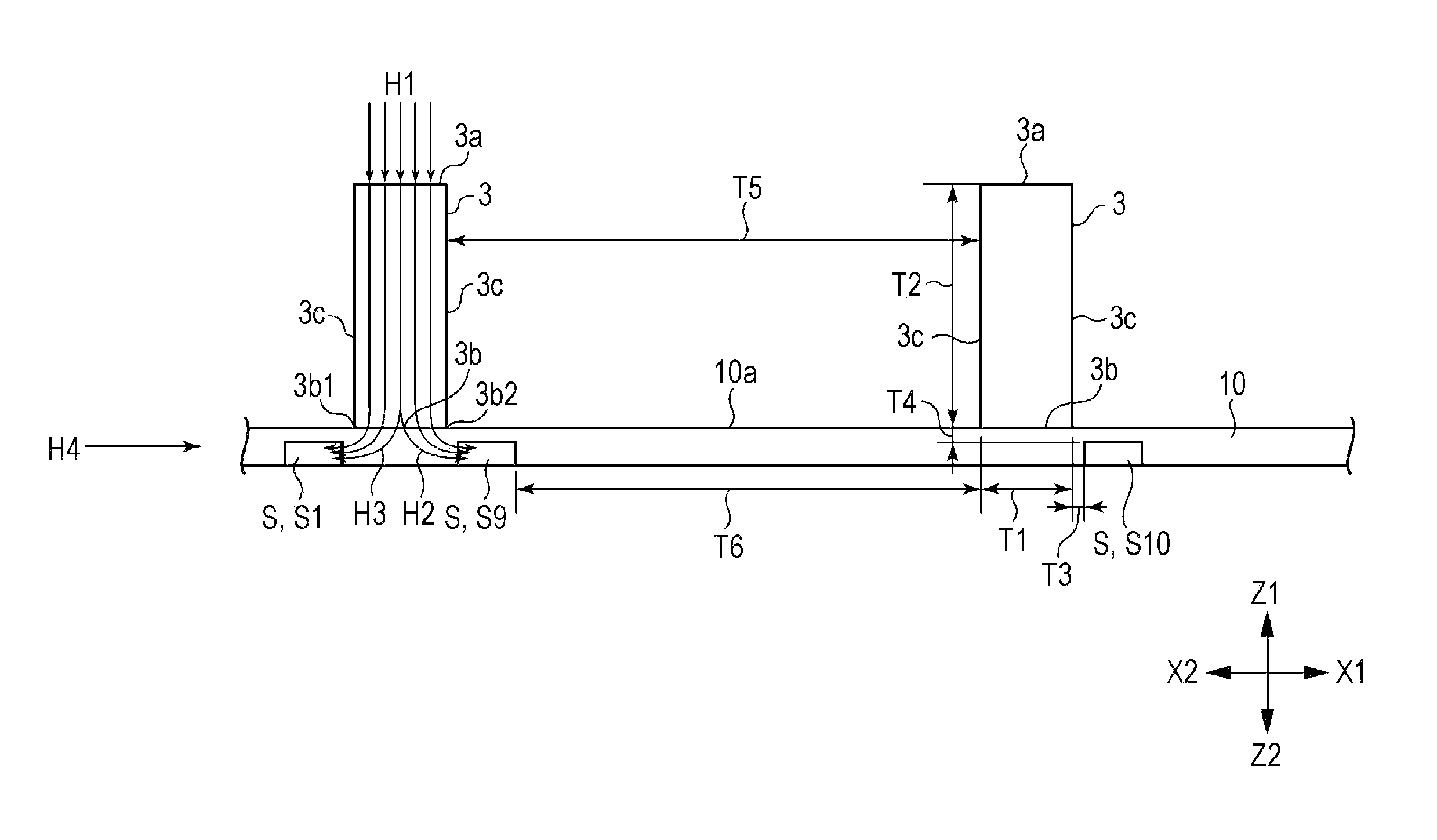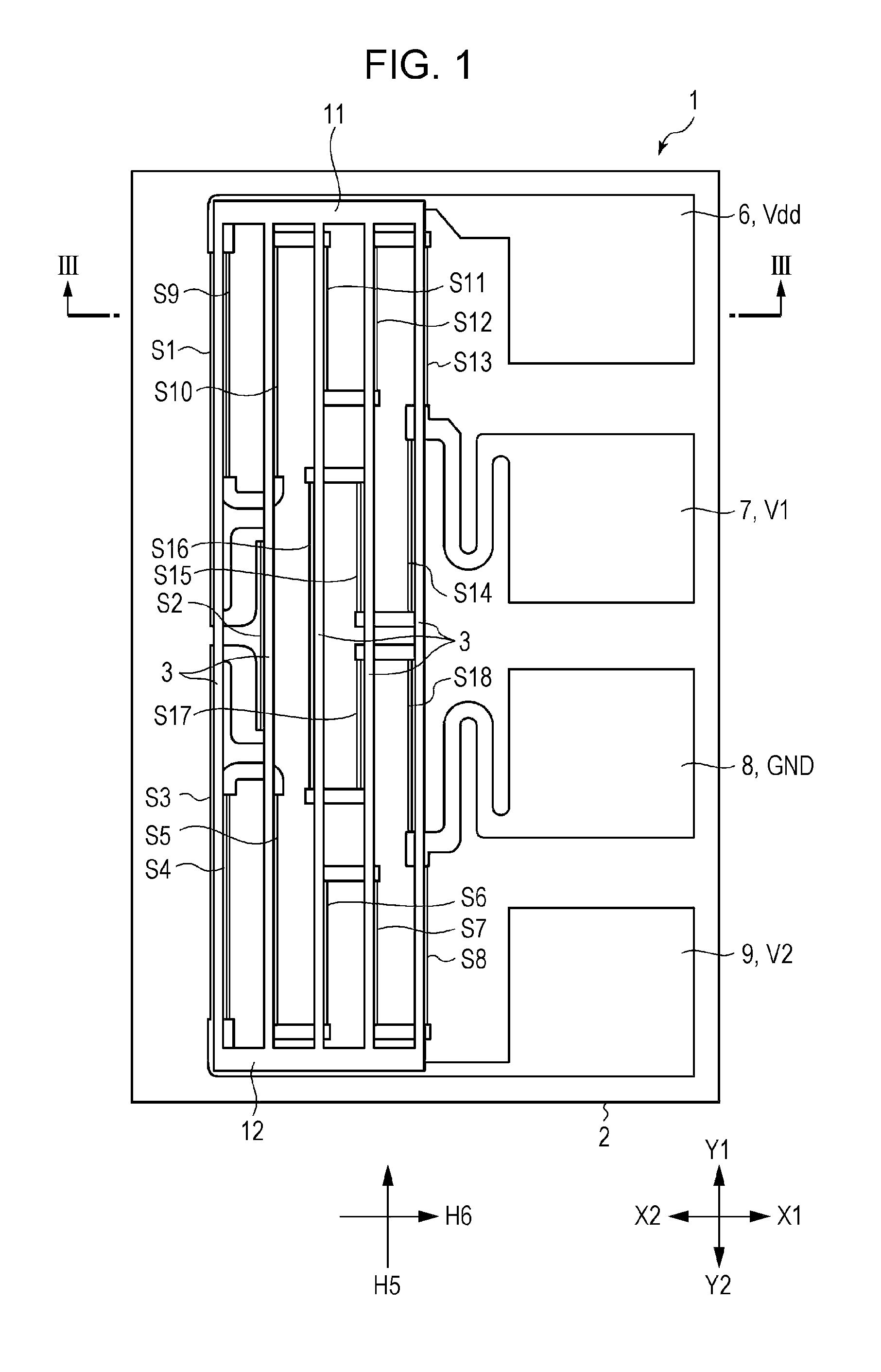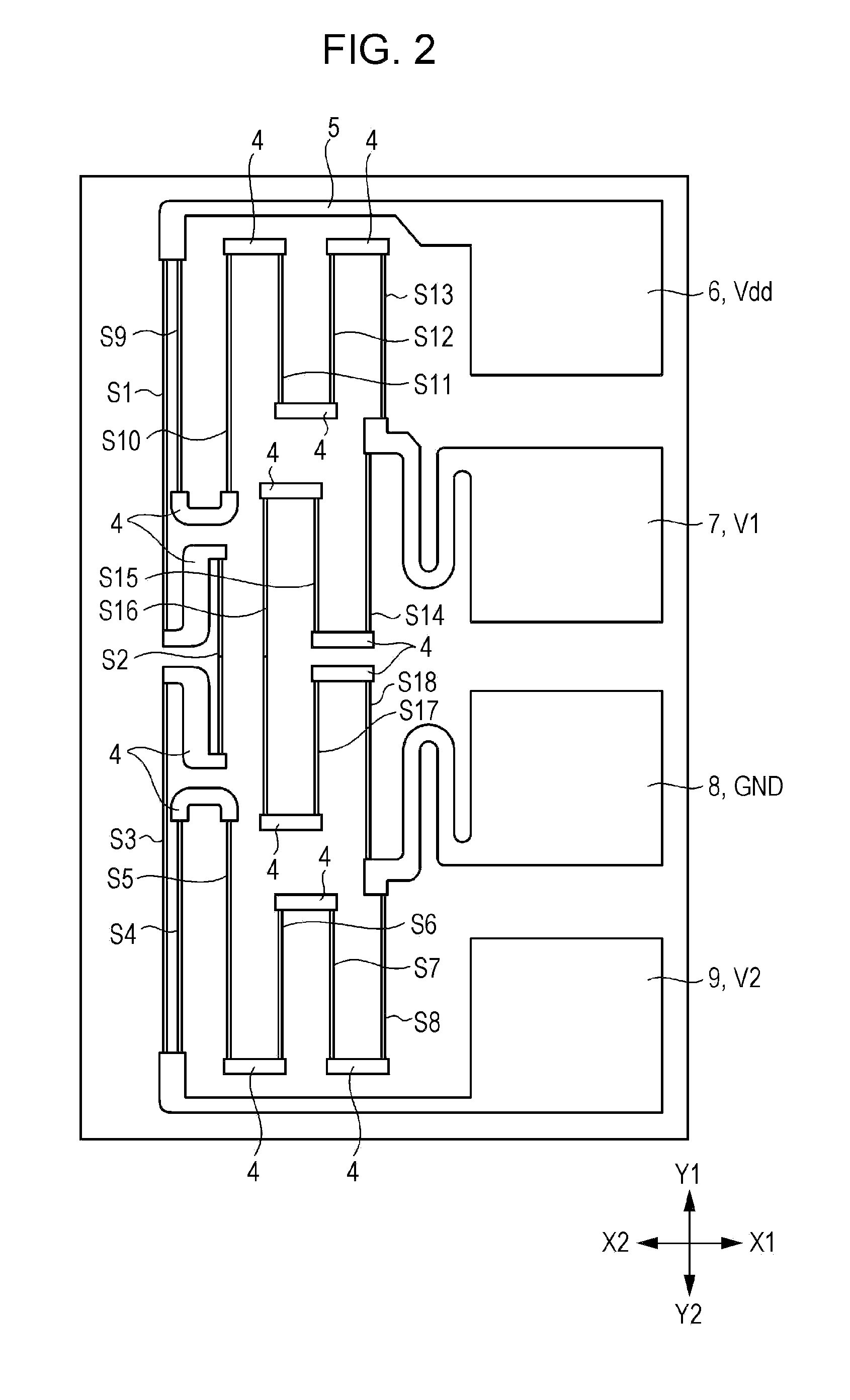Magnetic sensor
a technology of magnetic sensor and magnetic field, applied in the field of magnetic sensor, can solve the problems of narrow installation choice range, large size of magnetic sensor in plan view, and inability to achieve small-size magnetic sensor, so as to achieve the effect of reducing the sensitivity of the magnetoresistive elements to the horizontal magnetic field components, improving the sensitivity to the vertical magnetic field components, and improving the sensitivity
- Summary
- Abstract
- Description
- Claims
- Application Information
AI Technical Summary
Benefits of technology
Problems solved by technology
Method used
Image
Examples
Embodiment Construction
[0038]FIG. 1 is a plan view of a Z-axis magnetic sensor according to an embodiment of the present invention. FIG. 2 is a plan view of the Z-axis magnetic sensor illustrated in FIG. 1, from which first soft magnetic bodies and second soft magnetic bodies are removed. FIG. 3 is an enlarged partial vertical sectional view of the Z-axis magnetic sensor, taken along line III-III in the height direction and viewed in the direction of the arrows in FIG. 1. FIG. 4 is a circuit diagram of the Z-axis magnetic sensor according to the embodiment of the present invention. FIG. 5 is a partial vertical sectional view of a magnetoresistive element according to the embodiment of the present invention. FIGS. 6A and 6B are schematic diagrams (plan views) illustrating geomagnetic sensors each including a Z-axis magnetic sensor, an X-axis magnetic sensor, and a Y-axis magnetic sensor. FIG. 7 is a diagram illustrating strength of a magnetic field emitted from a soft magnetic body according to the embodim...
PUM
 Login to View More
Login to View More Abstract
Description
Claims
Application Information
 Login to View More
Login to View More - Generate Ideas
- Intellectual Property
- Life Sciences
- Materials
- Tech Scout
- Unparalleled Data Quality
- Higher Quality Content
- 60% Fewer Hallucinations
Browse by: Latest US Patents, China's latest patents, Technical Efficacy Thesaurus, Application Domain, Technology Topic, Popular Technical Reports.
© 2025 PatSnap. All rights reserved.Legal|Privacy policy|Modern Slavery Act Transparency Statement|Sitemap|About US| Contact US: help@patsnap.com



